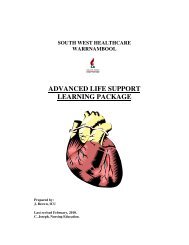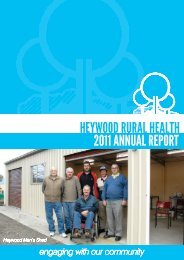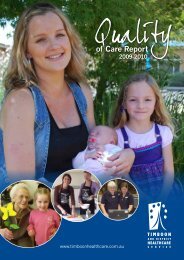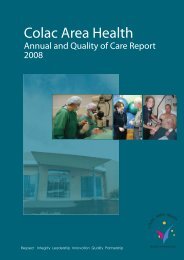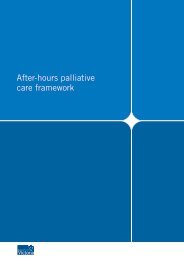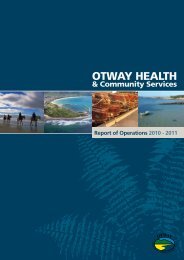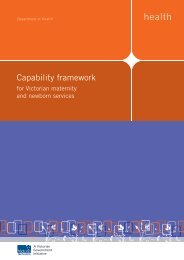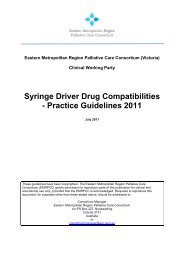Self Directed Learning Package - University of Queensland
Self Directed Learning Package - University of Queensland
Self Directed Learning Package - University of Queensland
- No tags were found...
You also want an ePaper? Increase the reach of your titles
YUMPU automatically turns print PDFs into web optimized ePapers that Google loves.
138 • The Palliative Approach ToolkitIf the resident can communicateAsk the resident if they have any pain.Tips:• Older people may deny that they are experiencing ‘pain’. Tryusing other terms like ‘ache’, ‘soreness’ or ‘discomfort’.• Most pain in older people is related to activity. Ask about painwhen they are active e.g. moving, transferring, being turned inbed, not when they are at rest.• Allow enough time for the resident to think about thequestion and reply.• Ask more than one question: ‘does it hurt anywhere?’, ‘do youhave any aching or soreness?’, or ’do you have any pain ordiscomfort’?Severity <strong>of</strong> pain can be assessed by asking the resident to ratetheir pain on a zero to ten scale where zero is no pain and ten isthe worst imaginable. 2Key PointEveryone has their own pain threshold and it isunhelpful and unfair to compare the scores <strong>of</strong>different residents. Instead, compare a resident’sindividual scores across time.If the resident cannot communicate or has acognitive deficitOne <strong>of</strong> the most difficult aspects <strong>of</strong> caring for the resident whocannot communicate or is cognitively impaired (e.g. advanceddementia) is identifying whether they are experiencing pain.Thinking PointWhat would happen if Alfred was unable tocommunicate his pain?How would you know if he was experiencing pain?How would you know if a treatment to manage thepain had been effective?Do you use a pain assessment tool for residents whocannot communicate?Key PointThe most effective method to assess pain inresidents who cannot communicate is to observebehaviours and facial expressions.Thinking PointThink <strong>of</strong> a resident you have cared for with advanceddementia or a communication deficit whom youthought might be experiencing pain. Have youobserved any <strong>of</strong> the following?• whimpering, groaning or crying• looking tense, frowning, grimacing, lookingfrightened• increased confusion, refusing to eat, alteration inusual behaviour patterns• perspiring, flushed or pale skin, abnormaltemperature, pulse or blood pressure• skin tears, pressure areas, arthritis, contractures,previous injuries.These pain behaviours and physical cues aremeasured in the Abbey Pain Scale. We recommendthe use <strong>of</strong> this scale for people who are unable tocommunicate.



